
Custom Designing Pampered Adventure since 1966

Destinations
Experiences
 |
L A D A T C
O T O U R S Custom Designing Pampered Adventure since 1966 |
 |
||||||||
| HOME | South America | Falkland Islands | Antarctica | Unique Destinations |
Unique Experiences |
Newsstand | ||||
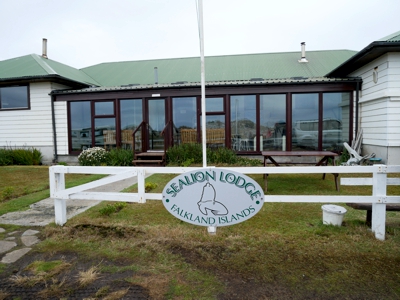 |
FALKLAND ISLANDS
Sea Lion Island Lodge
About Sea Lion
Island Lodge |
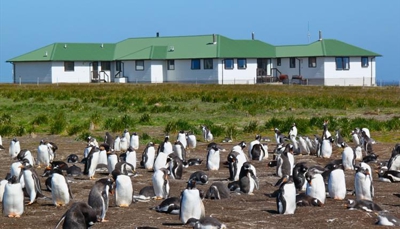 |
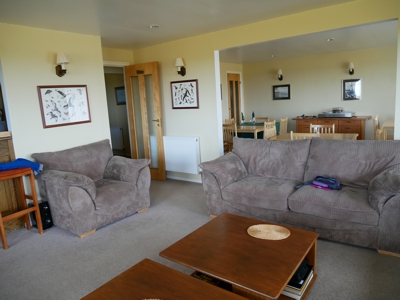 |
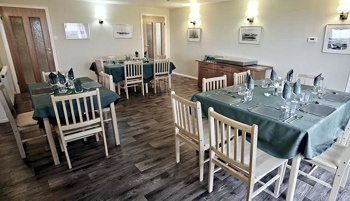 |
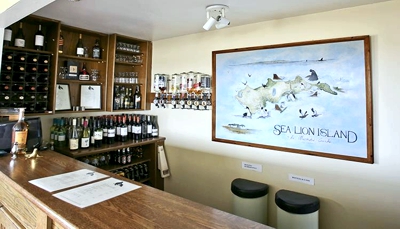 |
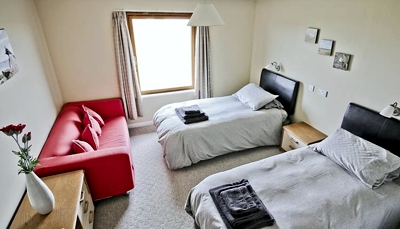 |
SEA LION ISLAND LOCATION:
Sea Lion Island is located 120 km southwest of Stanley and at 9.05km2 it is the largest of the Sea Lion Island Group, which also includes Rum, Brandy, Whiskey and the Sea Lion Easterly Islands. Sea Lion Island is the most southerly inhabited island in the Falkland archipelago at 52.43◦ south and 59.1◦ westABOUT SEA LION ISLAND LODGE:
Sea Lion Lodge was opened on the 7th January 1988 by the Right Honourable Lord Shackleton (the youngest son of Sir Ernest Shackleton, the famous Antarctic explorer).Guests can expect all the home comforts including central heating and en suite bathrooms in every room. Sea Lion Lodge is comprised of 12 bedrooms: 1 family room (double and 2 singles) 5 double/twin rooms (1 double and 1 single bed in each), 2 double rooms (double bed in each), 2 single en suite rooms, and two single rooms with a shared bathroom. All beds are British sizes.
The Lodge offers spectacular views of the South Atlantic – there is nothing but vast ocean (1200km) between Sea Lion Island and Antarctica. From the main lounge the views overlook the nearby gentoo penguin colony.
The bar is well stocked with an extensive range of wines, beers and spirits to enjoy after a wonderful day exploring the Island. There are WIFI hotspot cards available for purchase.
Sea Lion Island is a wildlife haven and under the National Nature Reserve Ordinance has a strict no smoking policy anywhere on the island. The only designated smoking area is situated outside the Lodge.
NOTE: Learn about the conservation and sustainability efforts the lodge is doing for the benefit of the islands and the lodge's guests.
TOURS & HIKING:
The Lodge is located towards the eastern end of the Island with gentoo penguin colonies on its doorstep. It is also within easy walking distance of the sandy beaches that are home to the southern elephant seals. On route to the beaches, you will encounter Magellanic penguins, striated caracaras (locally known as the Johnny rook), and plentiful upland geese and tussac birds, amongst others.TOURS: Guests have the option of a 4×4 vehicle tour (approx. 1.5-2 hours) to orientate themselves with the Island. The tour will take you to Long Pond, at the centre of the Island, and to the west end to visit the southern rockhopper penguins and imperial shags. The vehicles have plenty of space for your camera equipment.
HIKING: At just 9.5km long and 2.4km at its widest, if you are keen on hiking it is possible to explore much of what the island has to offer on foot. Guests can be guaranteed the experience of the South Atlantic solitude and wilderness and surrounded by wildlife at every turn. Along the walks guests can find all manner of whale and seal bones on the beaches. Guests are asked to beach-comb with their eyes only – nothing must be removed from the beaches.
The following is reproduced from the informational brochure you receive when you arrive, and offers some insight into life in the islands.
The nearest landfall is Bull Point, some eight miles away, and the nearest settlement is Bleaker Island, fourteen miles distant. This isolation and the rugged coastline, which offers no harbor, has meant that only the most resourceful and hardy sheep farmers, through the years, made their homes on Sea Lion Island.
Though virtually flat, the original settlers sought the islands' highest point on which to build their house. From the summit of this slight rise it would have been possible to signal passing ships and distant mainland neighbors. A simple system of bonfires (3 in a row meant help was needed) was used throughout the Falklands until the advent of radio, and on Sea Lion these beacons could easily be lit from the house. But the system was of limited value on this low, distant island and on two occasions perilous small boat journeys were made to summon help. In 1929, Alexander Dugas, a Frenchman employed on Sea Lion committed suicide and his companions felt it necessary to inform the authorities. But the lack of harbors meant that no boat of any size could be kept on the island and so a determined individual called Benny Davis constructed a make-shift craft from wooden barrels and launched it into the surf. The remarkable sailor set out just before dark, and arrived at Speedwell Island some twelve hours later. He explained that he had simply headed west and then taken his direction from the smell of the cormorants on Annie Island.
Benny Davis's exploits eloquently illustrate the hardship caused by such isolation until quite recently. One or two visits a year by ships to pick up wool and leave mail and provisions was the best that could be expected until the introduction of Government float planes in the early 1950's. Since 1982 conditions have changed. Coastal vessels now call three or four times a year to discharge cargo (which is winched up a steep cliff); Islander aircraft fly in and out on the grass runway with visitors almost every day at the height of summer; and doctors make routine visits about four times a year.
Over forty species of birds visit and nest on the island. Occasionally rare visitors arrive, such as southern lapwings, whimbrels, wilson's phalarope, swallows and egrets. The striated caracara, one of the rarest birds of prey in the world, nests on the island in a number of sites. They are called Johnny Rooks locally because they are cheeky and mischievous, and will steal any small object left unattended. The southern elephant seal breeds on the beaches from October and 400 pups are born each summer. The South American Sea Lion also breeds, and although in decline, up to 39 pups can be seen playing around their parents in December and January each year. Fur and leopard seals can be seen at times. The beaches are patrolled by killer whales, which add to the excitement of this wildlife paradise.
|
One special note: It is tradition in the islands to discard your footgear in the sun-room foyer before entering the main house. This has been the practical way over the years to keep the outdoors out and in the indoors cleaner. And after a hard day of exploring the spectacular wildlife of the area, your shoes can be pretty grubby. Plan to bring along a pair of warm socks or slippers to wear inside the house. |
||
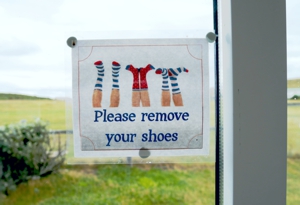 Darwin House |
||